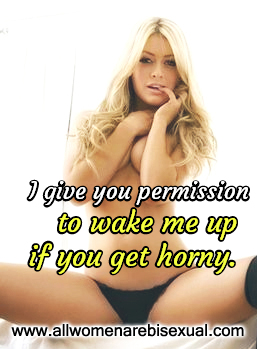Research About Women’s Sexuality
Fifteen years ago, Jane (as we’ll call her) considered herself a lesbian and had since an early age. Then, out of the blue, she fell in love with a man.
Their friendship started out platonic—just a guy and girl hanging out—but developed into more, leaving Jane a bit less sure about her sexuality. She was still far more into women than men, but this one guy—she couldn’t get him out of her head. Today, they’re happily married and she considers herself “a lesbian who happened to marry a man.”

Her story begs the question: is Jane gay, straight or lying? According to new research on the science of women’s sexuality, she’s none of the above.
So Much For the Straight and Narrow
For the past fifteen years, Lisa Diamond, Ph.D. a psychologist at the University of Utah, has been following a group of women (including Jane) who are attracted to other women. Her data shows, for the first time, how sexuality develops over a lifetime.
At each follow-up (six so far), Diamond asked each woman to label herself as lesbian, bisexual, heterosexual or unlabeled and share details about her love life. Her findings startled even her. Over time, each woman’s chosen labels changed repeatedly, with one noteworthy trend: The older they got, the more likely they were to choose “unlabeled.” In other words, the older they got, the more they felt their sexuality didn’t fit into tidy boxes.
“We have this idea that sexuality gets clearer and more defined as time goes on,” says Diamond. “We consider that a sign of maturity to figure out who you are. I’ve seen it’s really the opposite.” For her subjects, maturity brought less clarity and definition, not more.
Perhaps even more surprising is the fact that the majority of the men and women who report feeling some same-sex attraction consider themselves heterosexual. Continue reading…
Cool Valentines Day Treat!














0 Comments
You can be the first one to leave a comment.